When I was a new teacher—and I won’t say how many years ago that was—I was lucky enough to have a classroom mentor. Mr. Dudley was a kind soul with decades of experience and a true talent for engaging students. He had a collection of phrases he would say to get the kids motivated for each lesson, and one of their (and my) favorites was, “How do you eat an elephant? One bite at a time!” In short, even the biggest tasks can be completed by simply breaking them up into “bite-sized” parts, which can then be accomplished with small, manageable actions. Without fail, this would get students excited about seemingly difficult concepts and goals, making overwhelming learning objectives seem possible.
Mr. Dudley’s phrase can be applied to educational objectives on an administrative scale, too. How do you lead a school virtually during a pandemic? How do you meet the differentiated needs of all students and staff? And how can you realistically implement strategies for increasing student enrollment in your school’s AP® program when there are so many other tasks that require your attention? One bite at a time.
And the latter question does matter—AP courses provide students with college-readiness skills that allow them to thrive beyond high school, both in secondary education and beyond. High schoolers who choose to take AP courses have an edge on their college applications, proving to admissions officers that they are dedicated to their education and can handle a tough workload. Furthermore, 75% of students who take AP courses begin college with some amount of college credit, saving them both time and money while pursuing their undergraduate degrees.1
The following list provides administrators with five simple strategies for increasing student enrollment in AP courses in order to grow their school’s AP program. None of them require years of training or an excessive use of school funds. Instead, each of these strategies can be completed in manageable “bites,” resulting in higher AP student participation and a stronger AP program:
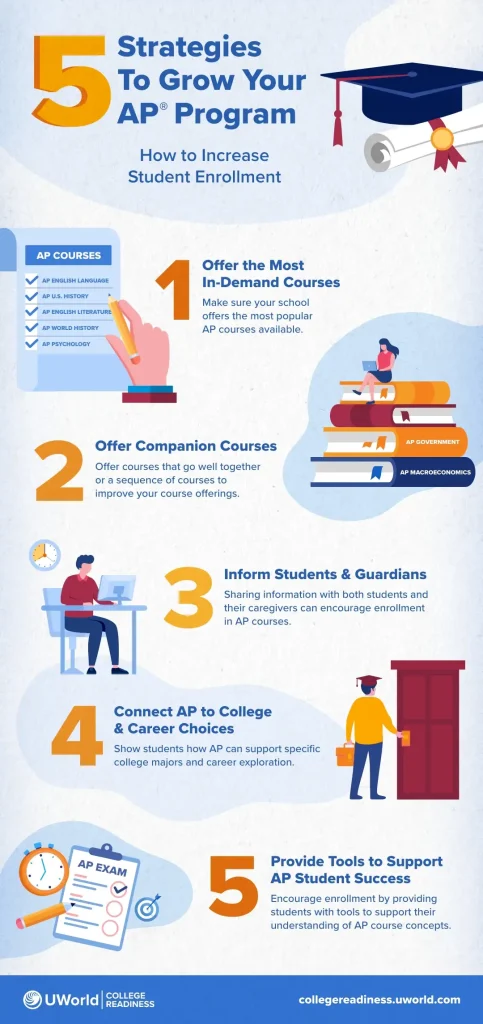
Tip 1: Offer the Most In-Demand Courses
This first tip may seem like common sense, but choosing which AP courses to offer at your school can be a nuanced process. School leaders need to consider which courses could potentially help their students become the most college-ready, which courses they can find qualified staff to teach, how these courses can fit into school scheduling limitations, and which courses might possibly interest students new to the AP program.
A great starting point for school leaders is to take a look at the most popular AP courses available and then decide which of those could realistically be included in their school’s AP program. Course popularity data changes frequently, but the most recent data can be found directly through the College Board®’s AP Exam Distribution report on AP Central.2 As of the latest report, the top five most popular AP courses were AP English Language and Composition, AP United States History, AP English Literature and Composition, AP World History, and AP United States Government and Politics.
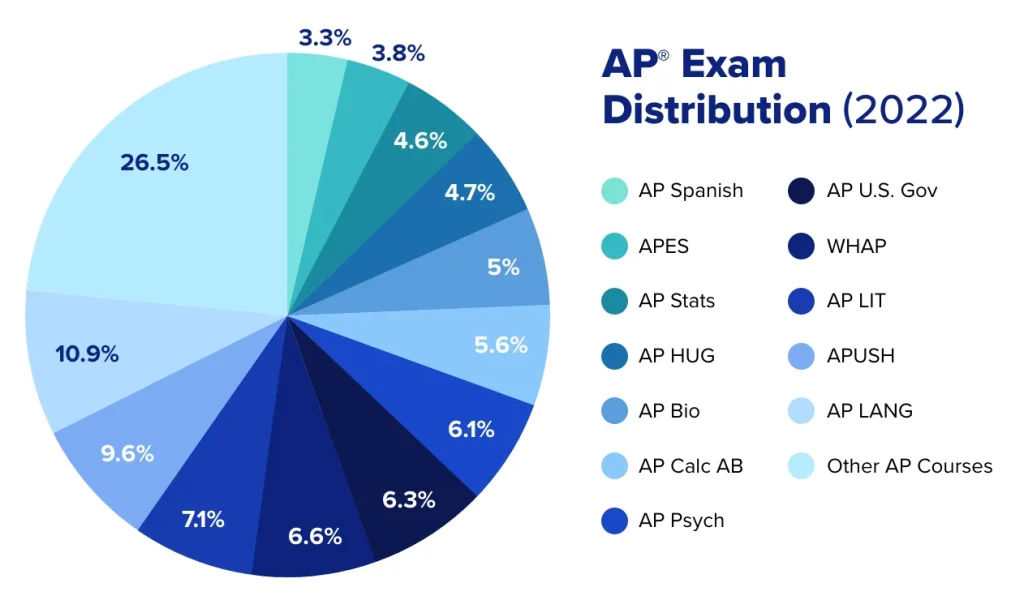
*The College Board’s AP Score Distributions Report by Subject (2022)2
Checking reports for the most popular AP courses overall is not the only way to gauge which courses would be the most “in-demand” at your school, however. Reaching out to students, whether through conversations with their teachers or a simple survey gauging interest, is a great way to find out which courses the students at your particular school are most interested in. Students may want to take courses that reflect their school’s community culture, or they may be interested in classes that better align with their college major aspirations. Offering these courses is one of many simple ways to increase student enrollment in AP classes.
Fun Fact
According to NCES data from the 2022-2023 school year, the top five undergraduate college majors were business, health, social sciences/history, engineering, and then biological/biomedical sciences (in that order).3 Choosing AP courses that align with these majors is a great way to determine which classes students may be most interested in. For example, both AP Macroeconomics and AP Psychology are excellent options for students who plan on majoring in business.
| Top 5 Most-Popular Undergraduate Degrees (2022-2023) | |||
| Popularity Ranking | College Major | Number of Degrees | Percentage of Degrees (from total earned) |
| 1 | Business | 387,851 | 19.0% |
| 2 | Health | 257,282 | 12.6% |
| 3 | Social Sciences/History | 161,164 | 7.9% |
| 4 | Engineering | 128,332 | 6.3% |
| 5 | Biological/Biomedical Sciences | 126,590 | 6.2% |
*NCES 2022-20232
Tip 2: Offer Companion AP Courses
It is a well-known truth in the fiction publishing industry that one of the best ways to hook readers is to offer them a book series rather than a stand-alone novel. This is because people love knowing precisely what to read after they’ve finished a book they’ve really enjoyed. AP courses work the same way—AP classes that have a clear path to another related course or a full sequence of related courses tend to be more popular because students have a clear idea of which classes to sign up for next. Additionally, class pathways are a great way to begin a specific learning pathway for a number of college majors. Students with eventual med-school ambitions can take AP Biology and AP Psychology. Students who want to eventually work in politics can take AP Government and AP Macroeconomics. Students who plan on majoring in engineering can take AP Physics and AP Calculus. The College Board offers guidance on common AP companion courses and course sequences, and school leaders can decide which might be a good fit for their campus.

*The College Board: AP Courses That Go Together4
Fun Fact
According to a 2021 data analysis report by the College Board5, 61-84% of high school students who test with a score of 2 or higher the first time they go through AP exam enrollment will go on to take additional AP courses and exams.
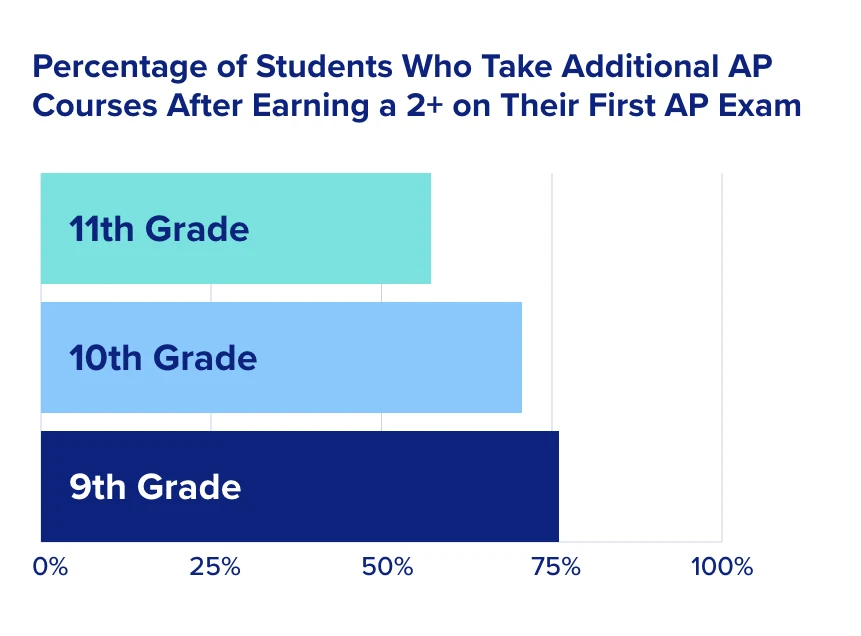
*June 2021 College Board Analyses5
Tip 3: Inform Students and Guardians About the AP Program
Every school leader knows just how important school communication is. This is especially true regarding student and guardian communication, particularly with regard to school programs and opportunities. Without proper communication, students and their caregivers might not have any way of knowing the details of a school’s AP program and what it offers. In many cases, they might not even know what an AP program is, let alone the opportunities it can provide college-bound students.
For years, a school’s primary means of communication was through printed flyers that were sent home with students and (hopefully) shared with their caregivers. Although printed letters are not unheard of in schools, they are no longer the primary, let alone the only, way to communicate with students and their caregivers. Email and social media mediums dominate school communication at the moment, but the best way to get the word out about a school’s AP program is through as many means as possible.

*Apptegy: School Communications in 20236
In addition to flyers, emails, and school communication apps, school leaders can update their campus’ website to include news and important information about their AP program and its potential benefits for students. They can host an assembly for students or make an announcement at a PTA or School Board meeting. Additionally, they can publish information about AP courses in the school paper or newsletter. Teachers can also speak directly to students they believe could potentially show interest in the AP program; guidance counselors can do the same. The more information students and their caregivers are exposed to about AP and its benefits, the more likely they are to become interested in AP course enrollment.
Fun Fact
The most common form of professional communication is email, with an average of 306 billion emails sent every day. That being said, socially, people prefer to communicate through social media applications. In fact, people spend about 116 minutes on social media each day.7
Tip 4: Connect AP Courses to College and Career Choices
AP courses are often referred to as college and career-readiness classes because they are meant to prepare students for the skill sets, work ethic, and critical thinking required to succeed in postsecondary education and beyond. That being said, AP courses can also prepare students for specific college majors and careers by starting them on a related content track. This is especially helpful if a student, after receiving the necessary score of three or higher on an AP exam, earns college credit toward their chosen degree.
Still, students don’t always immediately know how various AP courses can lead toward specific college majors and/or careers, and helping them become aware of future college pathways and career options may improve AP enrollment. A student may know they want to be a journalist, for example, but they may not realize that an AP Language course could help them pursue that line of work. Or they may know they want to study architecture in college but not realize that AP Calculus can help them get into a university architecture program. Guidance counselors and teachers can help students know the kind of degree and career options AP courses can offer them, and can encourage them to begin working toward their future ambitions.
Additionally, there are several effective non-traditional ways to help students better connect AP courses to career options. For example, administrators can host a career day “job fair” where local guest speakers could come to the school and discuss their job with students, which AP courses helped prepare them for their career, and which ones would help students achieve their own career goals. An alternative approach to this idea could be to host a “job fair” where current or former AP students could speak to their peers about their own experiences in the AP program and how it’s helping them prepare for life after high school graduation.
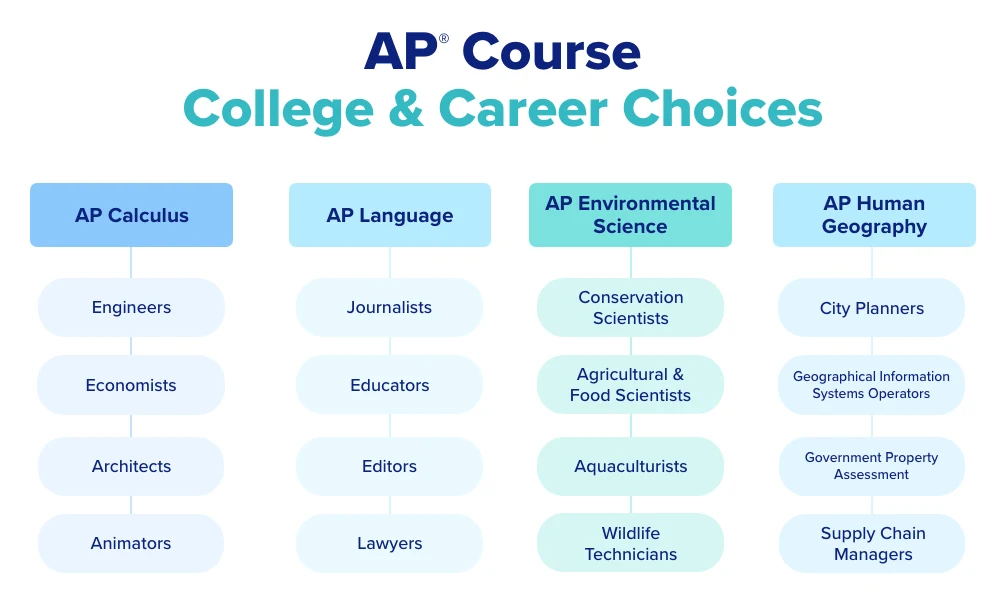
Fun Fact
According to the Center on Transition Innovations VCU8, a great way students can decide which AP courses to take is by considering career clusters and career pathways.
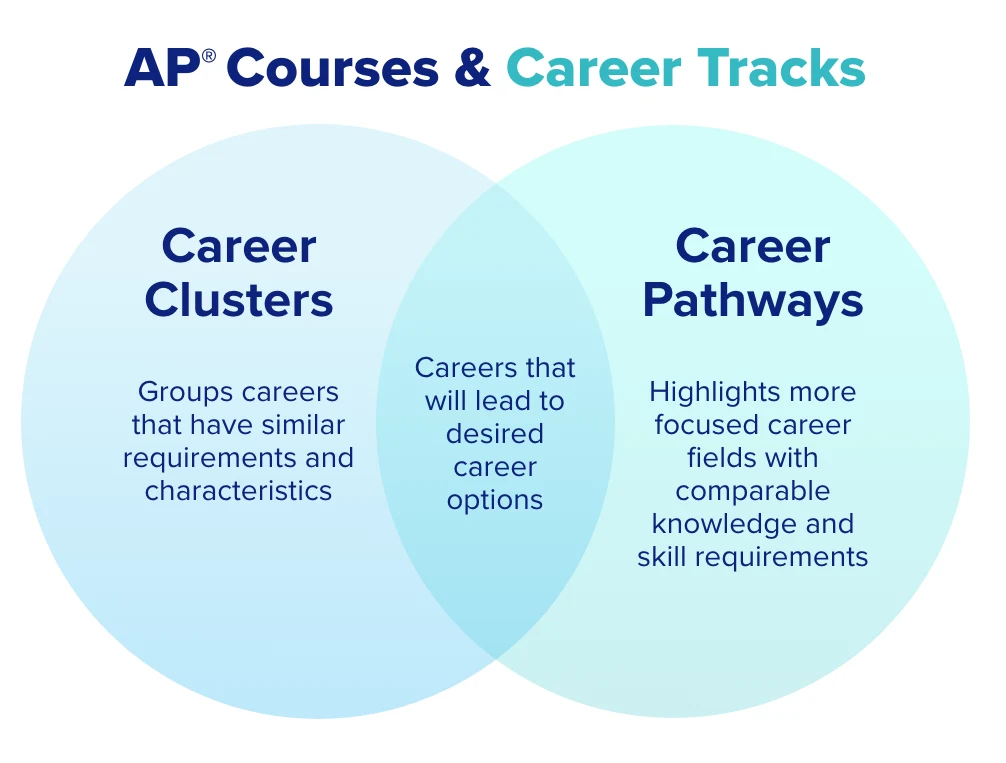
Tip 5: Provide Tools to Support AP Student Success
The first four tips we’ve listed are all little “bite-sized” actions school leaders can take to help students hear about AP courses and understand why taking AP courses could be an optimal choice for them. The last tip, however, is one that centers on how administrators can ensure students who do enroll in AP courses have the best chance for success possible. School leaders can do this by supporting their AP students with quality learning tools that can help them learn AP content authentically and efficiently.
But how does providing these tools fit into the enrollment strategies that can grow a school’s AP program? Quite simply, students who can confidently walk into an AP class, trusting their school will give them everything they need to excel in the course and on the exam, are much more likely to sign up for that AP class in the first place.
Students know AP courses are hard. If they don’t know prior to enrollment, they will certainly find out once they learn what to expect from an AP course. This can potentially scare away students who, if given the proper support and instruction, thrive in an AP class. School leaders can nip this problem in the bud by assuring students who are interested in AP courses that they will be given the tools they need to review content, learn from their mistakes and misconceptions, track their progress, and practice answering questions that mimic the ones they will see on the real AP exam.
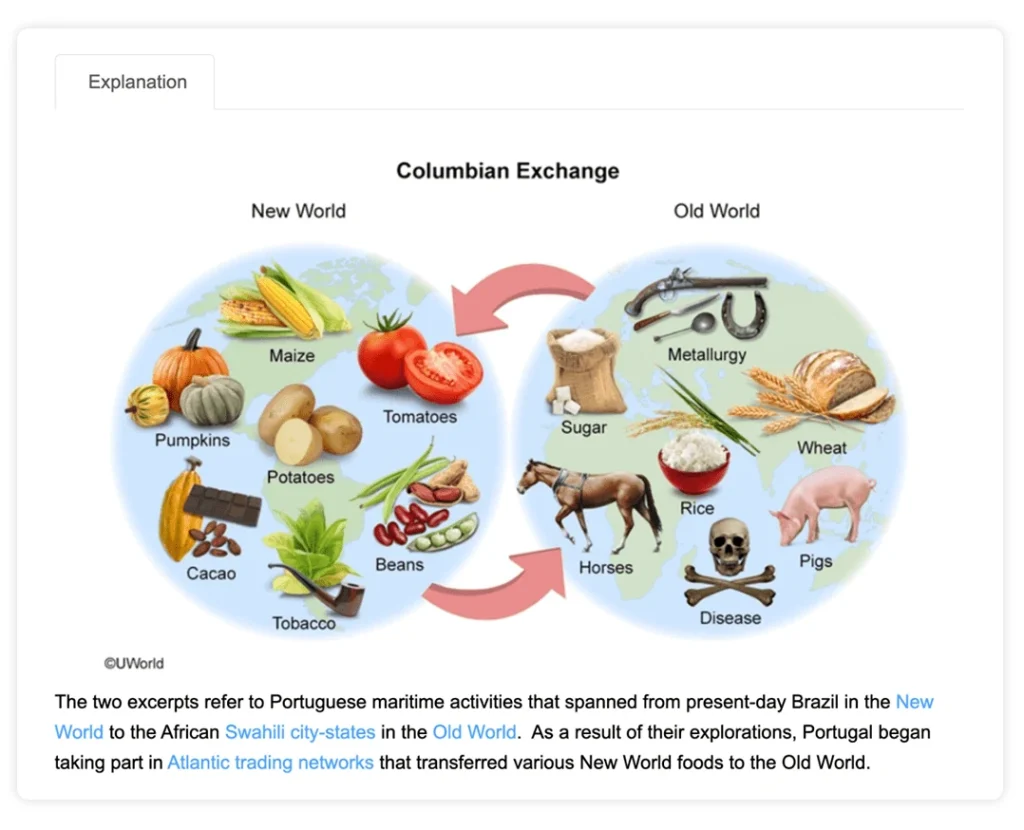
Fun Facts and Key Takeaways
UWorld’s Learning Tools for AP Courses offer practice questions that mirror those on the real AP exams, prompt explanatory feedback, and provide reporting features that assist AP teachers in customizing subsequent practice assignments to suit the needs of each student.
Learn more about how we strive to support AP teachers who want to make a difference in the lives of their students with our Learning Tools for AP Courses.
References
- The College Board. (2023b). Benefits of AP. AP Central. https://apcentral.collegeboard.org/about-ap/ap-a-glance/discover-benefits
- The College Board. (2022a, May). AP Score Distributions–By Subject 2022. AP Central. https://apcentral.collegeboard.org/media/pdf/ap-score-distributions-by-subject-2022.pdf
- NCES. (2023, June 16). 10 Most Popular College Majors. Coursera. https://www.coursera.org/articles/most-popular-college-majors
- The College Board. (2023). AP courses that go together. AP Central. https://blog.collegeboard.org/ap-courses-go-together
- The College Board. (2021). June 2021 New Analyses of AP Scores of 1 and 2. AP Central. https://research.collegeboard.org/media/pdf/new-analyses-ap-scores-1-and-2.pdf
- School Communication in 2023: Where to Share?. Apptegy. (2023, June 2). https://www.apptegy.com/guides/school-communication-channels/
- Gitnux, A. (2023, May 15). Communication Facts and Statistics and Trends in 2023. GITNUX. https://blog.gitnux.com/communication-facts-and-statistics/
- Virginia Department of Education. (n.d.). 8 Fascinating Facts: Explore & Research. Center on Transition Innovations VCU. https://centerontransition.org/resources/publications/download.cfm?id=130


